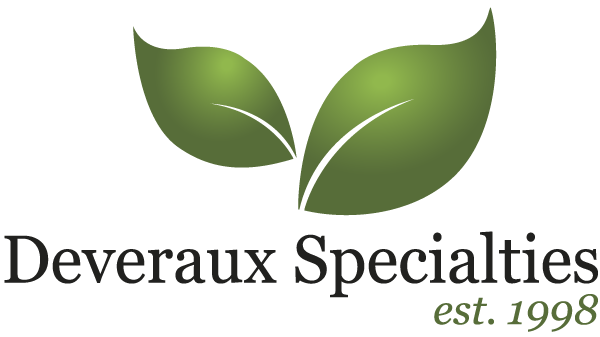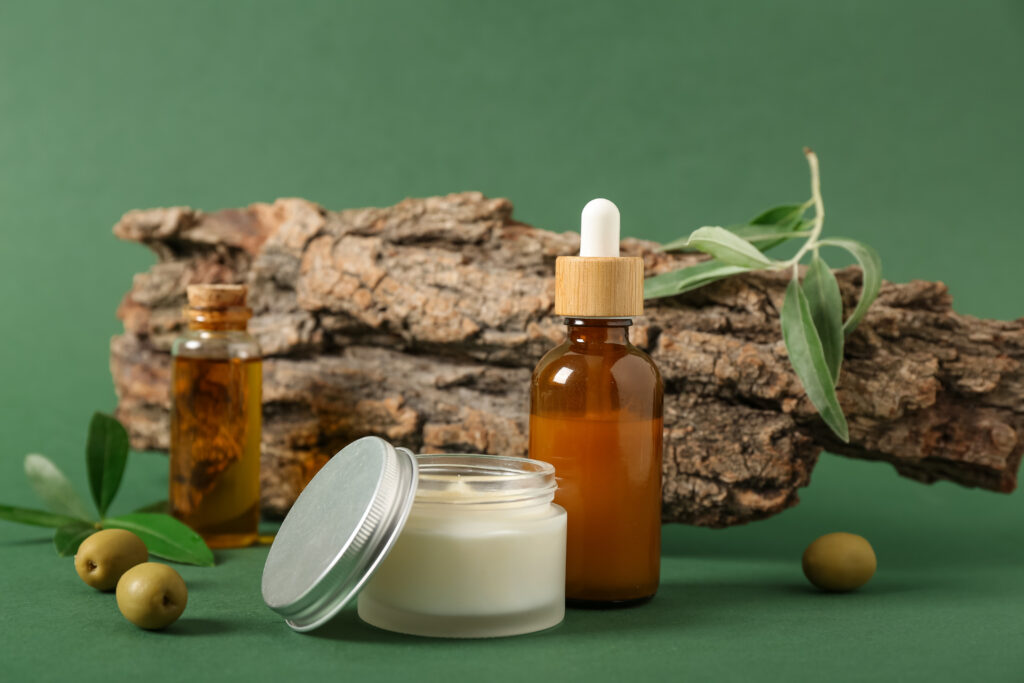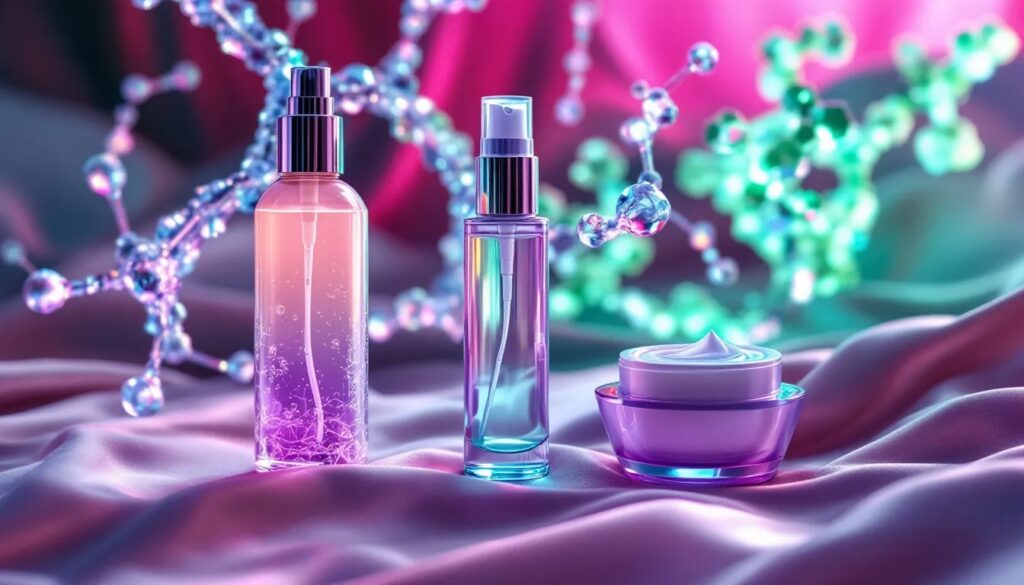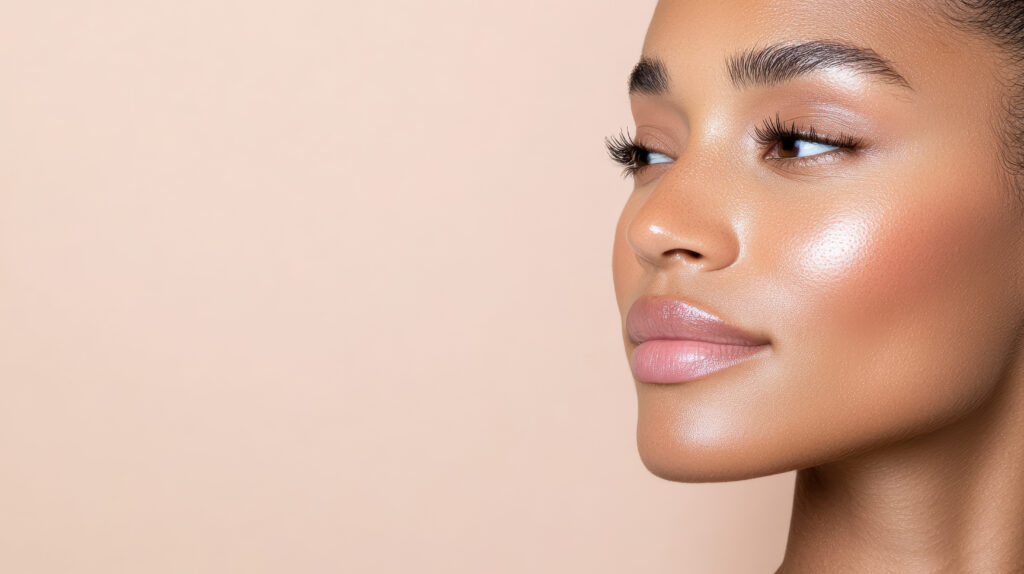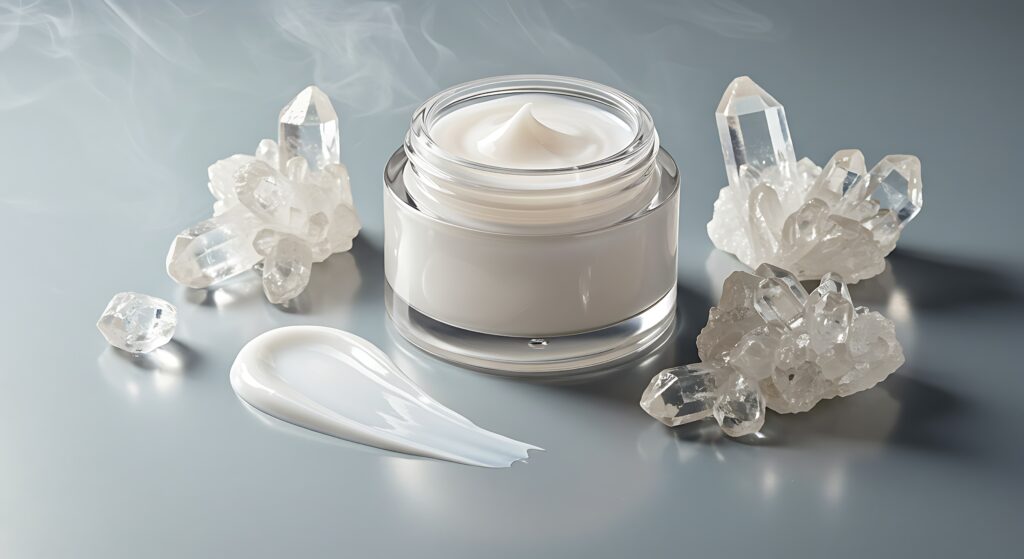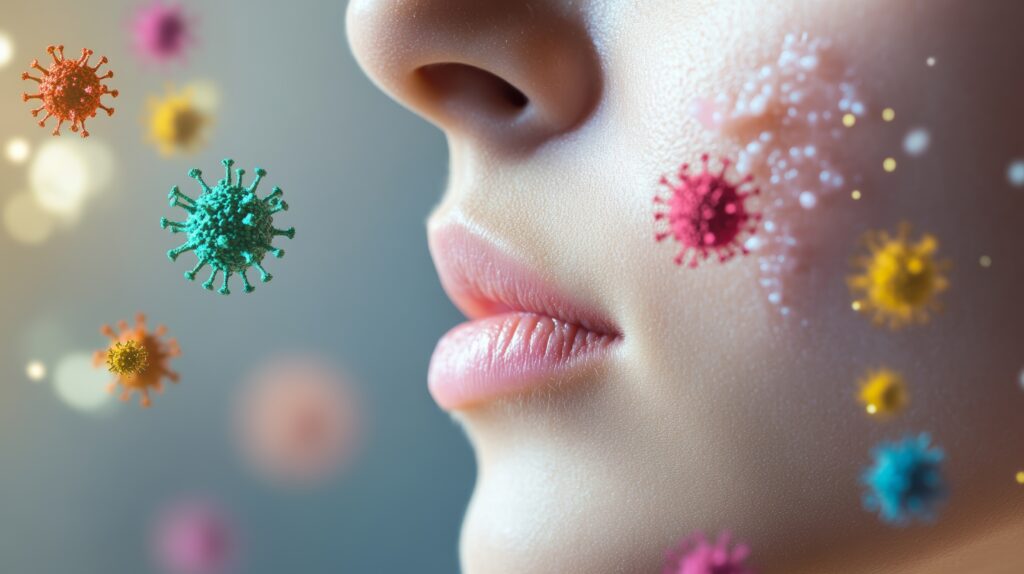The Summer Skin Problem You Can’t See
By mid-afternoon in July, plenty of faces look “fine”—no redness, no sting—yet the damage clock is still running. Ultraviolet exposure below the sunburn threshold creates DNA lesions, oxidative stress, and low-grade inflammation that persist long after the person steps indoors. In melanocyte-rich skin, a portion of that DNA damage doesn’t even appear until hours later, driven by chemiexcitation chemistry that continues in the dark; these delayed lesions include cyclobutane pyrimidine dimers (CPDs), the same mutagenic products implicated in photoaging and photocarcinogenesis (Premi et al., 2015).
Daily, sub-erythemal UV exposure also accumulates structural wear: depleted antioxidants, lipid peroxidation, protein carbonylation, and incremental barrier leakiness. Controlled human studies show that routine, below-sunburn UV doses measurably injure skin, which is why broad-spectrum protection and post-exposure care both matter (Young et al., 2007). In short: if the formulation strategy focuses only on visible redness, a large portion of biologically relevant damage goes unaddressed (Young et al., 2007; Premi et al., 2015).
Timing, Targets, and Tolerance
The first challenge is timing. Skin’s capacity to repair UV-induced DNA lesions follows a circadian rhythm; key repair enzymes and checkpoint pathways oscillate, and nighttime often aligns with higher repair competence in model systems (Gaddameedhi et al., 2011). Building an “overnight triage” product that delivers the right payloads when endogenous repair is more favorable is a rational way to amplify benefit without escalating irritation (Gaddameedhi et al., 2011).
The second challenge is targeting the right biology without compromising tolerance. Summer skin presents a specific pattern: persistent CPDs and oxidative/carbonyl stress; barrier perturbation with elevated transepidermal water loss (TEWL); dehydration despite sweat; and micro-inflammation that nudges matrix breakdown over time. Literature across dermatology and cosmetic science describes how chronic, low-grade inflammation (“inflammaging”), oxidative imbalance, and impaired barrier function reinforce each other, especially in photoexposed skin (Young et al., 2007; Premi et al., 2015). Formulators must neutralize reactive species, intercept carbonyl stress, tighten barrier lipids, re-hydrate with the right molecular geometry of humectants, quiet inflammatory signaling, and restart controlled renewal—all while keeping formulas elegant enough for nightly use.
How INdermal’s Portfolio Maps to Summer Skin Triage
INdermal’s delivery-system portfolio solves these formulation problems at practical use levels. The strategy is straightforward: match each damage node with a high-value active delivered by a system engineered for stability, epidermal delivery, and tolerance, then orchestrate them for overnight use.
Building the Overnight System
Why overnight? Two reasons. First, skin’s DNA repair and barrier recovery exhibit diurnal patterns; supporting these processes at night can be synergistic with endogenous rhythms (Gaddameedhi et al., 2011). Second, a night window reduces UV-induced degradation pressure on labile actives such as retinoids and vitamin C derivatives, and it sidesteps interactions with sunscreens during the day. Together, timing and environment tilt the odds toward better outcomes and fewer user complaints (Gaddameedhi et al., 2011; Stamford, 2012).
What does the delivery system buy you? For oxidative-stress actives and retinoids, stability and tolerability are often the rate-limiting steps. Encapsulating retinoids in lipid nanocarriers (e.g., SLNs/NLCs, liposomes) improves photostability, modulates penetration, and can reduce irritation versus conventional vehicles—outcomes documented across multiple reviews and experimental papers (Milosheska et al., 2022; Narsa et al., 2024; Pawłowska et al., 2024). In practice, this enables efficacious levels of retinal/retinol with fewer stinging events. For vitamin C derivatives, choosing stable forms and protective formulation strategies sustains potency and epidermal delivery—demonstrated specifically for 3-O-ethyl ascorbic acid (Stamford, 2012; Iliopoulos et al., 2019; Iliopoulos et al., 2020). Finally, EXO DDS adds a vesicular route for bakuchiol: plant-derived, exosome-like vesicles are increasingly studied as topical delivery vehicles that protect labile payloads and enhance skin uptake (Nemati et al., 2022; Kürtösi et al., 2024).
How does each node contribute—mechanistically? Ethyl C scavenges reactive oxygen species and counters carbonyl chemistry that persists after UV exposure (Stamford, 2012; Jarocka-Karpowicz et al., 2025). Niacinamide restores lipid architecture, reducing TEWL and the downstream inflammatory cascade tied to barrier leak (Tanno et al., 2000; Bissett et al., 2004). Oligo HA re-hydrates efficiently where it counts, using lower-MW fractions associated with better epidermal access and elasticity benefits (Jegasothy et al., 2014; Pavicic et al., 2011; Draelos et al., 2021). A calming anti-inflammatory active helps normalize cytokine signaling as barrier function rebounds (Young et al., 2007). EGF introduces a non-retinoid renewal axis (Shin et al., 2022), while retinal/retinol—delivered in a controlled way—accelerate orderly turnover and dermal matrix support with improved tolerability (Kwon et al., 2018; Milosheska et al., 2022). The net effect is a coordinated sequence: quell damage, reseal, rehydrate, and then remodel.
Formulation notes for summer-ready night serums. Keep pH in a niacinamide-friendly zone and compatible with your Ethyl C derivative; avoid unnecessary acids that raise sting potential in heat-exposed skin (Tanno et al., 2000; Stamford, 2012). Favor encapsulated retinoids to minimize irritation; airless packaging further reduces oxygen load (Milosheska et al., 2022). Use chelators and oxygen-scavenging antioxidants to defend Ethyl C (Stamford, 2012). Texture matters in July—lightweight emulsions or gels supported by film-forming humectants improve overnight wear without stickiness (Draelos et al., 2021). Finally, plan for daytime pairing: your night system should play cleanly under a morning antioxidant plus SPF routine. Trade analyses point to this systems approach—prevention plus repair—as a defining direction for high-performance suncare (CosmeticsDesign, 2025; Happi, 2025).
Making After-Sun Care Clinically Credible
Consumer expectations for summer skincare are moving beyond “don’t burn.” The market increasingly values after-sun recovery that feels good and works with real life, not just higher SPF (CosmeticsDesign, 2025). Formulators who can demonstrate credible, mechanism-first recovery—grounded in DNA repair timing, barrier science, antioxidant/carbonyl interception, and controlled renewal—will differentiate in a crowded field (Happi, 2025).
On the R&D side, the mechanistic picture is only getting sharper. The recognition that CPDs can form hours after exposure—even without visible erythema—reframes the value of night treatments. It justifies antioxidant and carbonyl interception alongside controlled renewal in the same product, and it argues for delivery systems that keep actives stable and comfortable enough for nightly, season-long compliance. That is precisely where INdermal’s DDS and EXO DDS designs provide a practical edge for brand builders.
Repair Wins When Timing and Delivery Align
Sub-erythemal UV damage is not a theoretical concern; it is a nightly backlog of lesions, radicals, and micro-inflammation that undermines skin quality over the season. A credible “Post-UV Triage” formulation uses timing and targeted delivery to convert that backlog into repair. INdermal’s Vegan DDS Ethyl C, Niacinamide, Oligo HA, Enoxolone, EGF, Pure Retinal, True Retinol, and EXO DDS Bakuchiol offer a full, compatible toolkit to do exactly that—stabilizing sensitive actives, aiming them where they work, and keeping the wear experience light enough for real-world use.
How will you convert sub-erythemal damage into overnight repair in your next launch? Deveraux Specialties can map endpoints to formats and provide compatibility notes, sample sets, and clinical data for INdermal’s portfolio. Start by submitting a request on our website or contacting your sales manager.
Vegan DDS Enoxolone
Vegan DDS EGF
References
- Bissett, D. L., Miyamoto, K., Sun, P., Li, J., & Berge, C. A. (2004). Topical niacinamide reduces yellowing, wrinkling, red blotchiness, and hyperpigmented spots in aging facial skin. International Journal of Cosmetic Science, 26(5), 231–238. https://pubmed.ncbi.nlm.nih.gov/18492135/
- CosmeticsDesign. (2025, April 22). Exploring the future of sun care: Key takeaways from CD’s high-performance beauty webinar. https://www.cosmeticsdesign.com/Article/2025/04/22/exploring-the-future-of-sun-care-key-takeaways-from-cdus-high-performance-beauty-webinar/
- Dhaliwal, S., Rybak, I., Ellis, S. R., Notay, M., Trivedi, M., Burney, W., & Farris, P. (2019). Prospective, randomized, double-blind assessment of bakuchiol and retinol for facial photoaging. The British Journal of Dermatology, 180(2), 289–296. https://academic.oup.com/bjd/article/180/2/289/5230084
- Draelos, Z. D., Lewallen, R., Dillaha, C., & McDaniel, D. (2021). Efficacy evaluation of a topical hyaluronic acid serum in facial photoaging. Journal of Clinical and Aesthetic Dermatology, 14(7), 40–45. https://pmc.ncbi.nlm.nih.gov/articles/PMC8322246/
- Gaddameedhi, S., Selby, C. P., Kaufmann, W. K., Smart, R. C., & Sancar, A. (2011). Control of skin cancer by the circadian rhythm. Proceedings of the National Academy of Sciences, 108(46), 18790–18795. https://www.pnas.org/doi/10.1073/pnas.1115249108
- Happi. (2025, March 3). Strategies for advanced photoprotection. https://www.happi.com/contents/view_experts-opinion/2025-03-03/strategies-for-advanced-photoprotection/
- Iliopoulos, F., et al. (2019). 3-O-ethyl-L-ascorbic acid: Characterisation and examination of its skin uptake/permeation. Pharmaceutics, 11(9), 493. https://pmc.ncbi.nlm.nih.gov/articles/PMC6733298/
- Iliopoulos, F., et al. (2020). Topical delivery of 3-O-ethyl-L-ascorbic acid from complex solvent systems. Pharmaceuticals, 13(2), 19. https://www.mdpi.com/2218-0532/88/2/19
- Jegasothy, S. M., Zabolotniaia, M., & Bielfeldt, S. (2014). Efficacy of a new topical nano-hyaluronic acid in humans. Journal of Clinical and Aesthetic Dermatology, 7(3), 27–29. https://pmc.ncbi.nlm.nih.gov/articles/PMC3970829/
- Jarocka-Karpowicz, I., Biernacki, M., Gęgotek, A., & Skrzydlewska, E. (2025). Antioxidant and membrane-protective effects of 3-O-ethyl-L-ascorbic acid. Free Radical Biology and Medicine, 214, 64–81. https://www.sciencedirect.com/science/article/pii/S0891584925000085
- Kürtösi, B., et al. (2024). A systematic review on plant-derived extracellular vesicles as drug delivery systems. International Journal of Molecular Sciences, 25(10), 5419. https://pmc.ncbi.nlm.nih.gov/articles/PMC11277065/
- Kwon, H. S., Lee, J. H., Kim, G. M., & Bae, J. M. (2018). Efficacy and safety of retinaldehyde 0.1% and 0.05% creams used to treat photoaged skin: A randomized double-blind controlled trial. Journal of Cosmetic Dermatology, 17(3), 471–476. https://pubmed.ncbi.nlm.nih.gov/29663701/
- Liu, X., Lou, K., Zhang, Y., Li, C., Wei, S., & Feng, S. (2024). Unlocking the medicinal potential of plant-derived extracellular vesicles: Current progress and future perspectives. International Journal of Nanomedicine, 19, 4877–4892. https://doi.org/10.2147/IJN.S463145
- Milosheska, D., Petreska-Ivanovska, T., Gjorgieva Ackova, D., Dimitrovska, A., Petkovska, R., Kavrakovski, Z., & Rafajlovska, V. (2022). Use of retinoids in topical antiaging treatments. Pharmaceutics, 14(10), 2145. https://pmc.ncbi.nlm.nih.gov/articles/PMC9618501/
- Narsa, A. C., et al. (2024). A comprehensive review of the strategies to reduce topical retinoid irritation. Dermatologic Therapy, 2024:5551774. https://onlinelibrary.wiley.com/doi/10.1155/2024/5551774
- Nemati, M., et al. (2022). Plant-derived extracellular vesicles: A novel nanomedicine for drug delivery. Cell Communication and Signaling, 20, 69. https://biosignaling.biomedcentral.com/articles/10.1186/s12964-022-00889-1
- Pavicic, T., Gauglitz, G. G., Lersch, P., Schwach-Abdellaoui, K., Malle, B., Korting, H. C., & Farwick, M. (2011). Efficacy of cream-based novel formulations of hyaluronic acid of different molecular weights in anti-wrinkle treatment. Journal of Drugs in Dermatology, 10(9), 990–1000. https://jddonline.com/articles/efficacy-of-cream-based-novel-formulations-of-hyaluronic-acid-of-different-molecular-weights-in-anti-S1545961611P0990X
- Pawłowska, M., et al. (2024). Solid lipid nanoparticles incorporated with retinol and oligopeptide… Pharmaceutics, 16(7), 1042. https://pmc.ncbi.nlm.nih.gov/articles/PMC11432460/
- Premi, S., Wallisch, S., Mano, C. M., Weiner, A. B., Bacchiocchi, A., Wakamatsu, K., … Brash, D. E. (2015). Chemiexcitation of melanin derivatives induces DNA photoproducts long after UV exposure. Science, 347(6224), 842–847. https://pmc.ncbi.nlm.nih.gov/articles/PMC4432913/
- Ratanapokasatit, Y., Niumpradit, N., & Manuskiatti, W. (2022). The efficacy and safety of epidermal growth factor for acne scars: A randomized split-face trial. Journal of Clinical and Aesthetic Dermatology, 15(6), 29–35. https://jcadonline.com/epidermal-growth-factor-acne-scars/
- Schouest, J. M., Hoverson, A. R., & Wong, H. K. (2012). Improved texture and appearance of human facial skin after daily topical application of barley bioengineered, human-like epidermal growth factor (EGF). Journal of Drugs in Dermatology, 11(5), 613–620. https://jddonline.com/articles/improved-texture-and-appearance-of-human-facial-skin-after-daily-topical-application-of-barley-produ-S1545961612P0613X
- Shin, S. H., Park, H. Y., & Kim, N. I. (2022). The use of epidermal growth factor in dermatological practice. Clinical, Cosmetic and Investigational Dermatology, 15, 1403–1417. https://pmc.ncbi.nlm.nih.gov/articles/PMC10333026/
- Stamford, N. P. J. (2012). Stability, transdermal penetration, and cutaneous effects of ascorbic acid and its derivatives. Journal of Cosmetic Dermatology, 11(4), 310–317. https://onlinelibrary.wiley.com/doi/pdf/10.1111/jocd.12006
- Tanno, O., Ota, Y., Kitamura, N., Katsuyama, M., & Inoue, S. (2000). Nicotinamide increases biosynthesis of ceramides as well as other stratum corneum lipids to improve the epidermal permeability barrier. British Journal of Dermatology, 143(3), 524–531. https://onlinelibrary.wiley.com/doi/10.1111/j.1365-2133.2000.03705.x
- Waggett, S., Lyles, E., & Schlesinger, T. (2024). Update on low-molecular weight hyaluronic acid in dermatology: A scoping review. EMJ Dermatology, 12(1), 134–146. https://www.emjreviews.com/wp-content/uploads/2024/11/Update-on-Low-Molecular-Weight-Hyaluronic-Acid-in-Dermatology-A-Scoping-Review.pdf
- Young, A. R., Orchard, G. E., Harrison, G. I., & Klock, J. (2007). The detrimental effects of daily sub-erythemal exposure on human skin in vivo can be prevented by a daily-care broad-spectrum sunscreen. Journal of Investigative Dermatology, 127(5), 1247–1254. https://www.researchgate.net/publication/6713750_The_Detrimental_Effects_of_Daily_Sub-Erythemal_Exposure_on_Human_Skin_In_Vivo_Can_Be_Prevented_by_a_Daily-Care_Broad-Spectrum_Sunscreen
